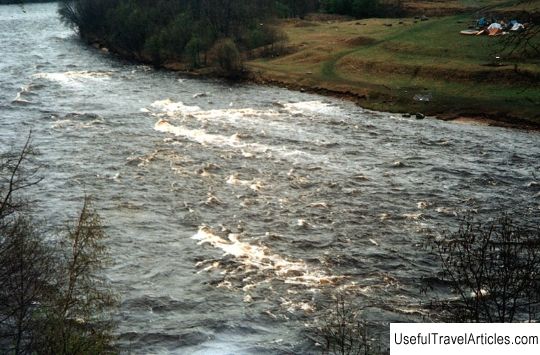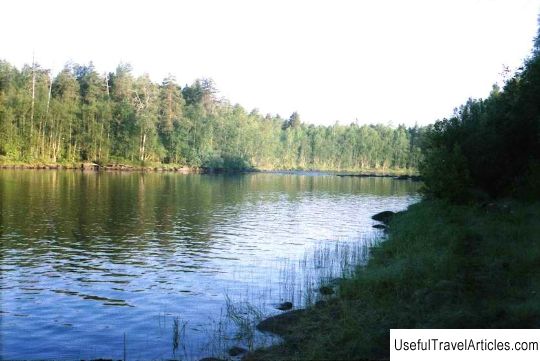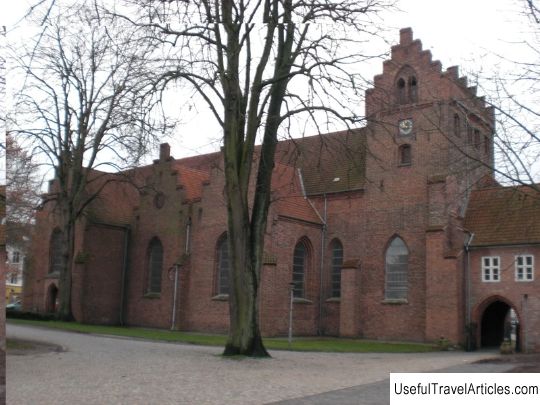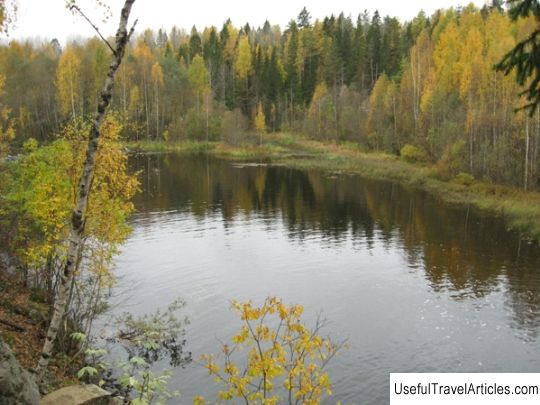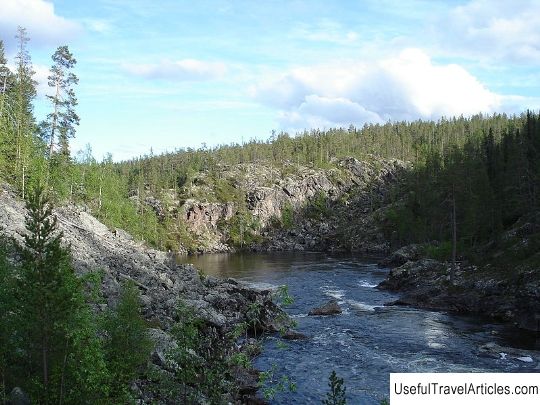Opoki tract description and photos - Russia - North-West: Vologda Oblast
Rating: 9,0/10 (2765 votes) 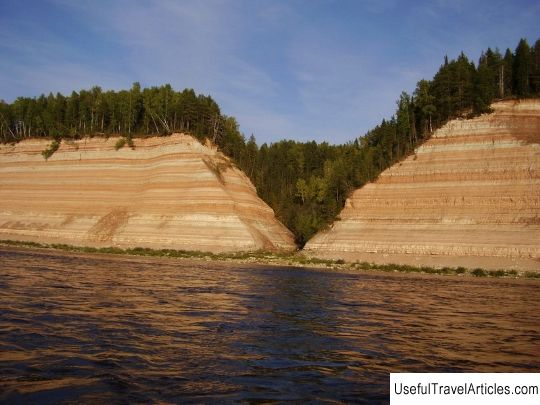
Opoki tract description and photos - Russia - North-West: Vologda region. Detailed information about the attraction. Description, photos and a map showing the nearest significant objects. Photo and descriptionThe largest river in the Vologda region is the Sukhona river. Sukhona is known for its rapids and rifts, picturesque shores, a backward current in high water, multiple river channel changes in the mouth part. One of the most striking places on the Sukhona River is Opoki, a well-known geological fault - a village and a rapids that have the same name ... They are called the Sukhonsky diva, the Sukhonsky pearl. From Ustyug to the sights a little more than 70 km. The banks reach a height of 60 meters. The longest rapids on the Sukhona are 1.5 km. The Holy Mountain and the Holy Stream, cutting through this 60-meter coast. Opoki - this is the name of the steep bend and the most dangerous threshold on the Sukhona. The river squeezed by high steeps rages, foams between stones. In this place, there is a rapid current, the speed of which reaches 5m / sec, which can be compared only with mountain rivers. At the beginning of the 20th century, in order to conduct ships through the Opokskie rifts, the neighboring peasants were called. Fifty, and sometimes even a hundred people were harnessed to the haulers' straps and held the ship in the fairway, preventing it from hitting the stones. In ancient Russia, the word "gaize" was translated as "rock". Sukhonsky rocks formed on the plain. The river, cutting through the bedrock deposits, reveals a 65-meter thickness of Quaternary and Permian deposits. The coast looks like a huge layered cake with dark gray, brownish-brown and white stripes of clays, siltstones, marls, limestones, which have been formed over 200 million years ago. In the Opok zone there is a gushing source of ferruginous artesian waters. The well was drilled over half a century ago. Water from it was supplied through pipes to the livestock farm, as old residents testify, the height of the fountain has significantly decreased recently, all this is associated with a decrease in water reserves in the aquifer. In winter, an intricate ice sculpture forms near the fountain. One of the most impressive and original cliffs on the Sukhona is "Mad Sluda". Its upper part is cut by deep ravines, among which you can find tall earthen `` towers '' overgrown with forest. Some trees on the slopes of the ravines are inclined in different directions. In the period from 1943 to 1947, the GULAG zone - "Opokstroy" was located in Opoki. They tried to curb the willful Sukhona by building a hydroelectric system: they cut ryazh from the best forest, filled them with earth and stones, and covered them with iron. The construction was carried out by a large "construction" organization of that era - the NKVD. In order to maintain a high water level on the rift, it was decided with the help of prisoners to build a dam across the river. By the beginning of the navigation period in 1947, the work was completed. However, during the first drift of ice, the river demolished part of the dam. Its remains were scattered over the Sukhona. And now only dilapidated sluice buildings and a bowing cross to innocent people who died during the construction period do not let them forget what happened. The flora of the tract is unique: larch and fir are messengers of harsh Siberia, a beautiful northern orchid - tuber calypso, clematis is a liana rarely found in northern forests, forest anemone. The world of birds and insects is beautiful and no less amazing. At the beginning of the XXI century, Opokas were given the status of a landscape reserve.           We also recommend reading La Merced monastery and church description and photos - Peru: Cuzco Topic: Opoki tract description and photos - Russia - North-West: Vologda Oblast. |
